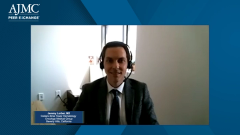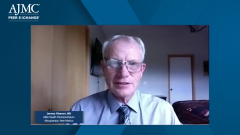
Educating Patients and HCPs About Cold Agglutinin Disease
Special considerations educating health care professionals and patients about lifestyle interventions and cold avoidance for cold agglutinin disease.
Episodes in this series

Neil Minkoff, MD: Let’s transition a little. We’ve seen the patient, we’ve gone through the differential diagnosis, we’ve done the testing that we’ve described, and we’ve suffered through some of the pain points. Now what do we do? That’s the question of the hour. There are therapies people use. My understanding is there aren’t any that are specific for cold agglutinin disease, but please correct me if I’m wrong about that, especially the clinical folks. What do you do? Dr Raval, what do you say first and foremost to a patient in terms of a combination of behavioral change, medication change, and so on as you’re starting to take them from diagnosis to the next stage of the journey?
Mihir Raval, MD, MPH: The biggest lifestyle change that I advise the patient to do is avoiding cold exposure. That’s 1 of the biggest [things] affecting their quality of life. People who are out and about and ambulatory, you want to ask them to avoid cold. And they have to be vigilant. They have to make sure that the food that they’re eating and beverages that they’re drinking aren’t too cold. Sometimes, that can trigger painful swallowing episodes. Sometimes they have to wear long-sleeve shirts to make sure they have most of their body parts covered, so they’re not exposing themselves too much to the cold outside. That’s the biggest lifestyle change: they have to be consciously aware of their surroundings.
That applies to patients who are out and about. If the same patient gets hospitalized, you have to educate your clinical staff on how to handle cold exposure inside the hospital. For example, if they need blood transfusion, you may have to warm the blood product, but not too warm, if they’re in the hospital. Also, if they’re getting fever, don’t use the cooling blanket because that can precipitate symptoms. You want to use the antipyretics. If you end up doing plasma exchange for the patient, you have to use a specialized warm room for them, otherwise any plasma exchange procedure can trigger the cold agglutinin symptoms. Those are 2 facets: cold avoidance by the patient, but at the same time, the clinical staff who’s taking care of the patient needs to be aware of all these nuances when they’re taking care of them in the hospital. That’s 1 of the biggest lifestyle changes that the patient has to do on their own, and the clinicians and the health care team has to be aware of it.
Neil Minkoff, MD: Do you do in services and things like that, especially for the hematology-oncology staff, in terms of making sure all these are known ahead of time to try to avoid the cooling blanket, for example?
Mihir Raval, MD, MPH: One of the good things that I have is that at least I’m blessed with having an inpatient hematology-oncology floor, an inpatient plasma exchange service, and all our nurses—the nurse educators are very familiar with this process. As clinicians, we rarely have to do an in service, but we have nurse educators who are very trained in this process. They have protocols in place, and they do onboarding for all incoming staff, so we rarely have any issues with them. We’re also a Level 1 trauma center, so the blood bank is also quite familiar with this process of blood warming and everything. That’s a good thing. But I understand some places aren’t familiar with that, and that can be a very challenging situation to put the patient through if they’re not in a situation or a place where they’re familiar with how to handle this.
Transcript edited for clarity.
Newsletter
Stay ahead of policy, cost, and value—subscribe to AJMC for expert insights at the intersection of clinical care and health economics.






























































